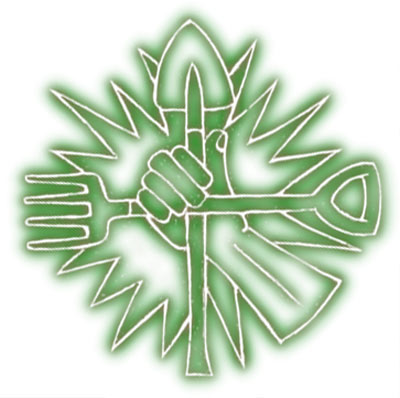Spring Seeding Guide - Seed Vigor
Much of the seed sold by seed companies to gardeners was not harvested in the previous year. “Packed for 2008" means just that. In the U.S., as long as the germination rates meet a (federally-mandated and surprisingly low) percentage, the seeds can be sold to gardeners – and without revealing the results of a recent germ test that law determines must appear on 1lb or larger bags of seed. Seed companies will often sell from batches of seed that are several years old.
Gardening literature, including that devoted to seeding, insists that the decline in germ rates that goes hand in hand with ageing seed is simply a minor inconvenience easily compensated for by sowing more thickly.
But relative freshness affects more than the germ rate. Indeed, the difference between fresh and older seed, in seedling vigor, plant health, momentum, productivity, resistance to disease and predation, and other factors, is simply astounding to witness.
You would hear more about this, but because the vast majority of gardeners and garden commentators have spent decades growing up seed from outside sources, they have no experience growing seed they know is fresh, alongside seed of unknown provenance. Experienced hands can typically tell whether seedlings are from fresh or old seed, at a glance. See the difference yourself. Where possible, save your own seed, or collect it from growers you trust.
A further significant benefit of saving your own seed, again almost completely unremarked upon in seeding literature, is the change in planting tactics and strategies it affords. Plants produce seed in an abundance that can leave first-time seed-savers open-mouthed in astonishment.
Seed Ecology is Seeding Ecology
By saving your own seed, what is perhaps the root limitation informing your approach to gardening is freed from draconian economic constraints – the need to make all, of a relatively tiny amount of seed, count.
Plentiful, direct, broadcast and experimental seeding has the potential to move your ecology and that of your garden in a freer, more expansive and natural direction. Where possible, save your seed and liaise with those who do – attend seedswaps.
Chapter Six of Steven Solomon’s “Growing Vegetables West of the Cascades”, a superb bioregional primer for intermediate to advanced gardeners, provides a brief but highly illuminatng overview of considerations to bear in mind when purchasing seed from commercial sources.
February 5,2008
By Nick Routledge for the Observer Allotment Blog
